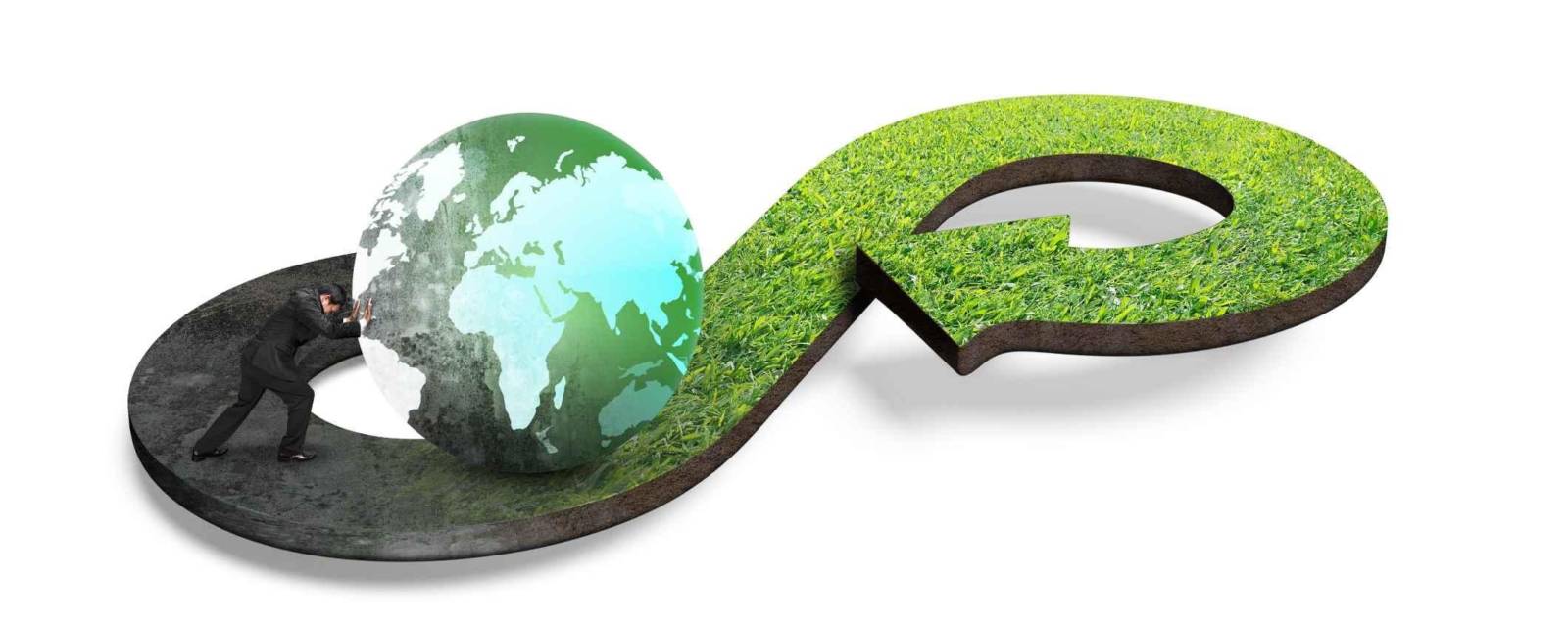The current linear economy has been strongly challenged in recent years regarding its merely focus on economic growth in spite of the resulting environmental degradation [1]. Hence, the model of Circular Economy (CE) is becoming steadily more appealing, considering that its ultimate goal is decoupling economic activity from resource consumption [2]. The concept of CE is generally accepted as a system that is “restorative and regenerative by design”, and aims to retain products, materials and resources at their highest utility and value at all times [3]. Nevertheless, knowledge gaps and debates still persist concerning how the CE can promote economic growth, ensure social equity and decrease the virgin resource extraction by closing the loop [1]. So can indeed sustainable economic growth concurrently coexist with ensuring environmental protection? I will try to shed some light on this question in the following paragraphs.
The advocates of the CE paradigm claim that this model could minimize resource dependence while contributing to employment, growth, competitiveness and innovation simultaneously. They suggest that the CE could be used to tackle issues related to under-employment and economic stagnation. For instance, in the current linear economy only 1 job position is related to 10,000t of waste disposal, while in the CE it could generate 20 jobs. Stable economic growth is outlined as one of the main benefits from moving to the CE, with the precondition of ensuring beforehand investments for development of new technologies that will avail efficient collection and waste management [4]. The economic advantages of the CE scenario are also highlighted in a study by the Ellen MacArthur Foundation. The results showed an increased disposable income when moving to the CE model, influencing the consumption positively hence impacting the GDP growth. The economic development will be attained predominantly by the increase profit from emerging circular activities, combined with lower production costs due to better resource utilization [5].
On the other side of the spectrum, opponents are arguing that EU companies are already utilizing the utmost economic benefits related to the 3R-imperatives and cannot afford increased economic costs resulting from aiming towards higher circularity [6]. Clear doubts are also expressed regarding the achievement of optimum circularity of our economic system without a radical systematic transformation [7]. The most vital thermodynamic and ecological foundations upon which the CE concept is rooted are also being questioned. Namely, the closed loop of the CE can never allow for growth both economic and environmental, if the Earth being an open system as such and the natural world which is taken as a basis for the CE notion operate using short cycles rather than extended lifetimes [8]. Even the increased service sector linkage with economic growth which was established in late 1990s [9], is now being challenged when the geographical element is introduced into the equation. Despite the popular view that the leading trade partners currently are Asia and the United States, the most recent research shows that Europe is overtaking the place of the United States with $1.5 trillion of annual merchandise trade with Asia [10]. Taking this as a contextual background for our analysis and merely focusing on goods which are produced in Asia and consumed in Europe the most probable economic impact on both continents will look somewhat like this: decreasing the demand for those goods and increasing the service to extend their life will result in economic benefits in terms of employment opportunities in Europe, while economic costs will occur in Asia due to reduced sales and employment opportunities [8].
So can indeed sustainable economic growth concurrently coexist with ensuring environmental protection? Can we address climate change and achieve economic growth simultaneously? Who will drive this systematic change of the whole society? Well, as you might have already concluded a blog of 500 words cannot answer questions for which polemics are still ongoing on many different fields for quite some years; but the ReTraCe network and its cohort of 15 new thought leaders have better odds.
Stay tuned for answers…and even more questions.
——————
[1] Millar, Neal et al. (2019) The Circular Economy: Swings and Roundabouts? Elsevier, Ecological Economics. 158 (4), 11-9.
[2] Ellen MacArthur Foundation (2017) Circular Economy – UK, USA, Europe, Asia and South America. Available from: https://www.ellenmacarthurfoundation.org/circular-economy/concept [Accessed: 17th March 2019).
[3] Ellen MacArthur Foundation (2012) Towards the circular economy – economic and business rationale for an accelerated transition.
[4] Esposito, Mark et al. (2015) Is the Circular Economy a New Fast-Expanding Market? Thunderbird International Business Review. 59 (1), 9-14.
[5] Ellen MacArthur Foundation (2015) Growth within: A Circular Economy Vision for a Competitive Europe. Foundation for Environmental Economics and Sustainability (SUN [Stiftungsfonds für Umweltökonomie] und Nachhaltigkeit).
[6] Reike, Denise et al. (2018) The circular economy: New or Refurbished as CE 3.0? — Exploring Controversies in the Conceptualization of the Circular Economy through a Focus on History and Resource Value Retention Options. Elsevier, Resources, Conservation & Recycling. 135 (4), 246-64.
[7] Gregson, Nicky et al. (2015) Interrogating the circular economy: the moral economy of resource recovery in the EU. Economy and Society. 44 (2), 218-43.
[8] Skene, K. R. (2018) Circles, spirals, pyramids and cubes: why the circular economy cannot work. Sustainability Science. 13 (2), 479-92.
[9] Stahel, Walter R. (1998) Selling performance instead of goods: the social and organisational change that arises in the move to a service economy. Paper presented at eco-efficiency: a modern feature of environmental technology. Dusseldorf.
[10] World Economic Forum (2019) Explained, the economic ties between Europe and Asia. Available from: https://www.weforum.org/agenda/2019/05/ways-asia-and-europe-together-connected/ [Accessed: 26th July 2019).

